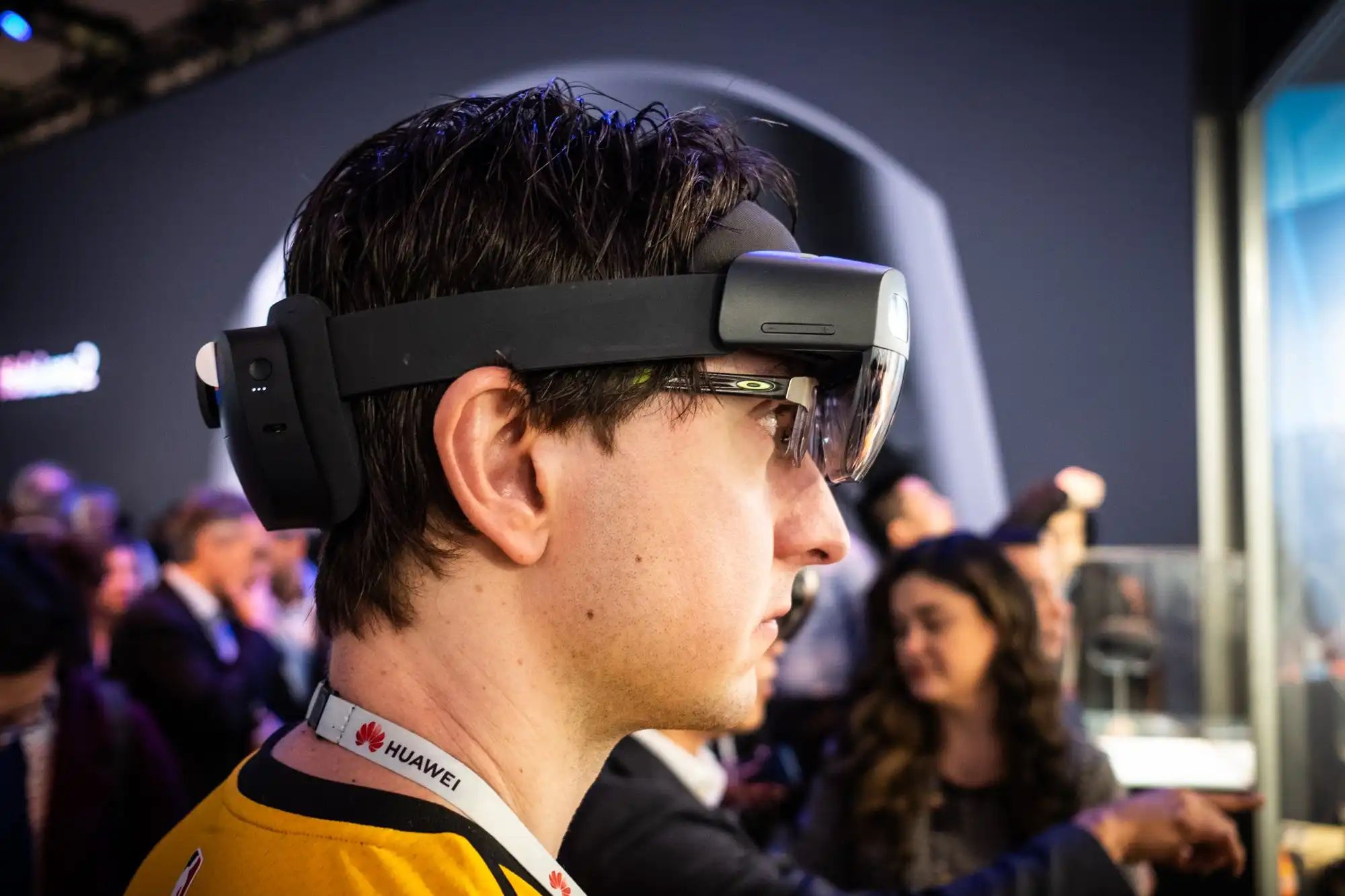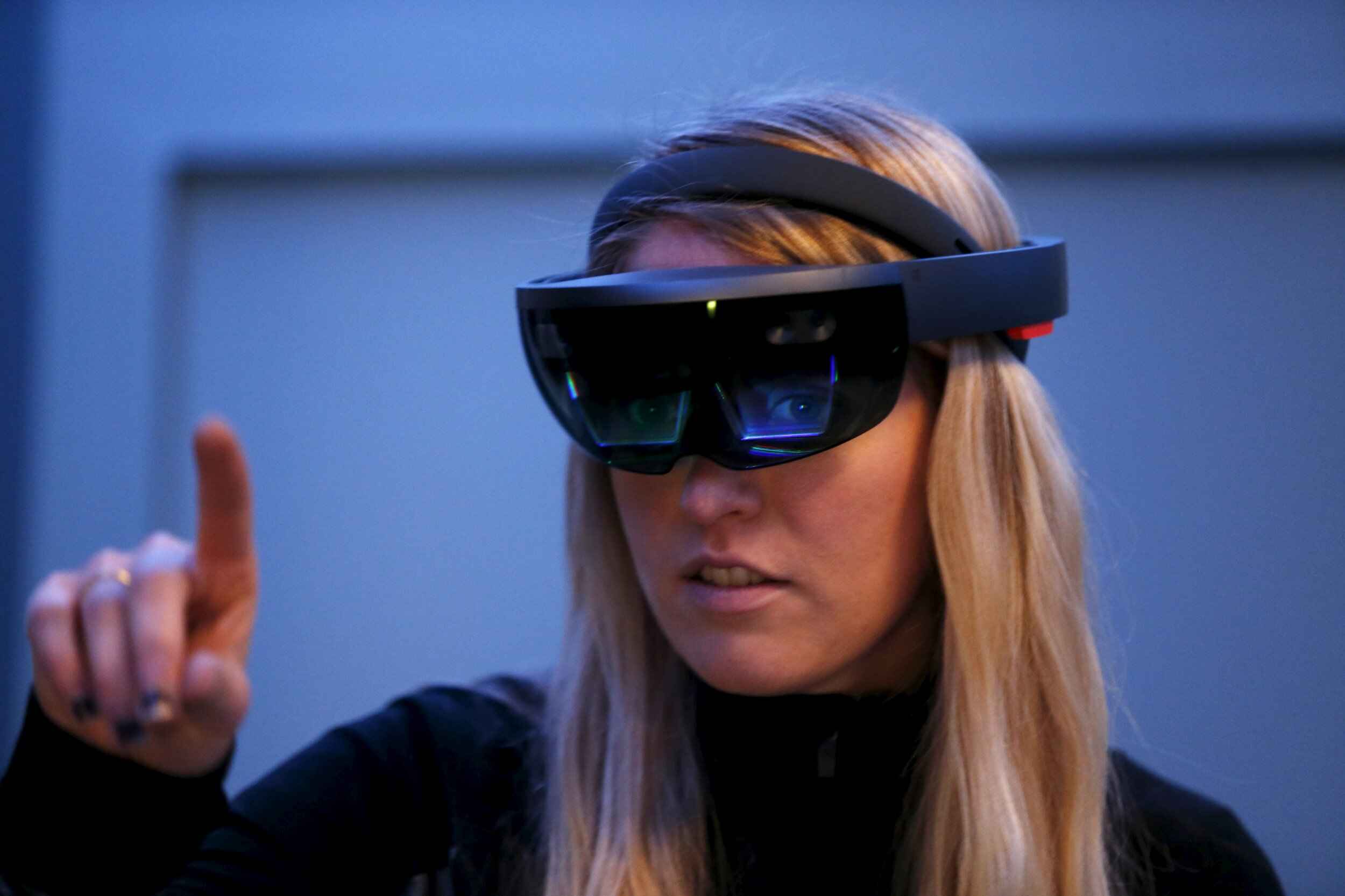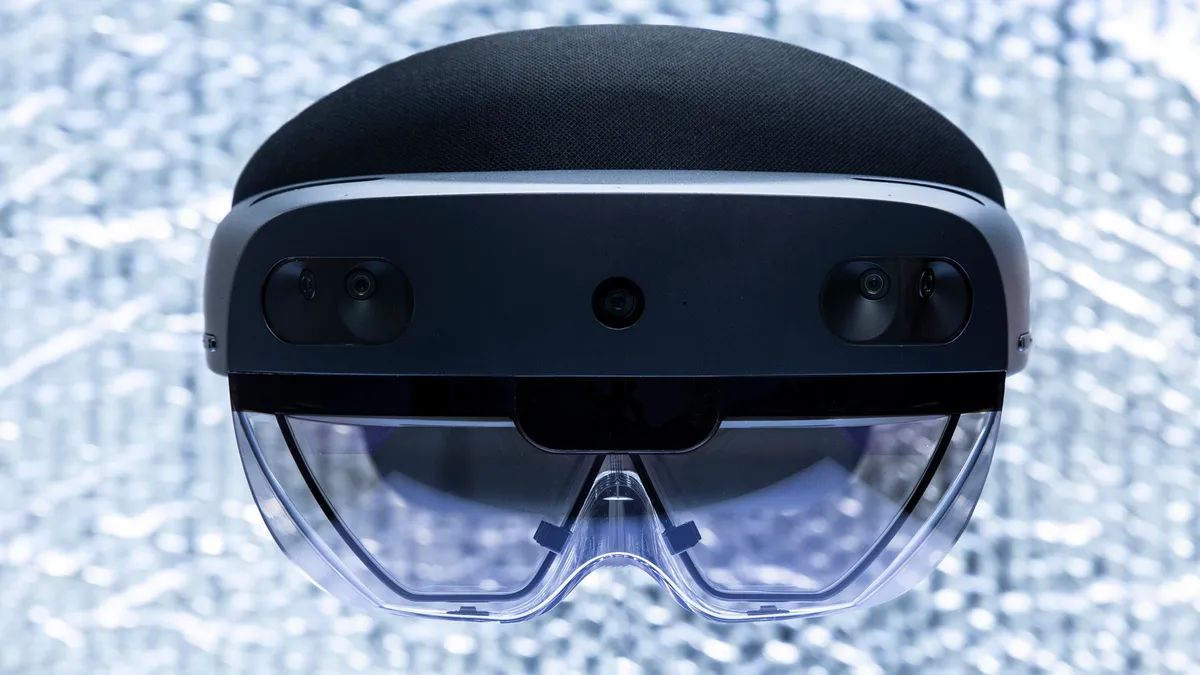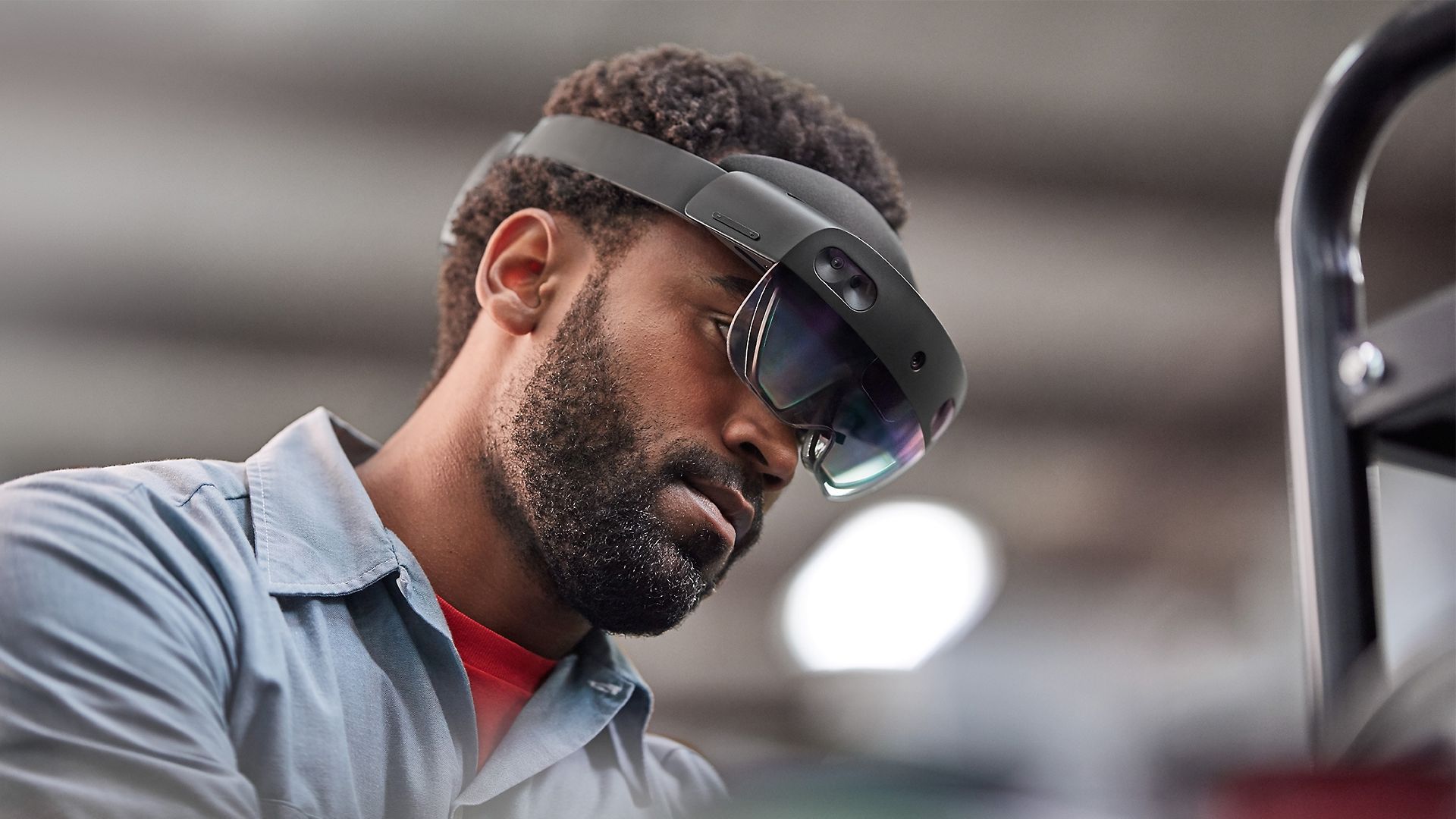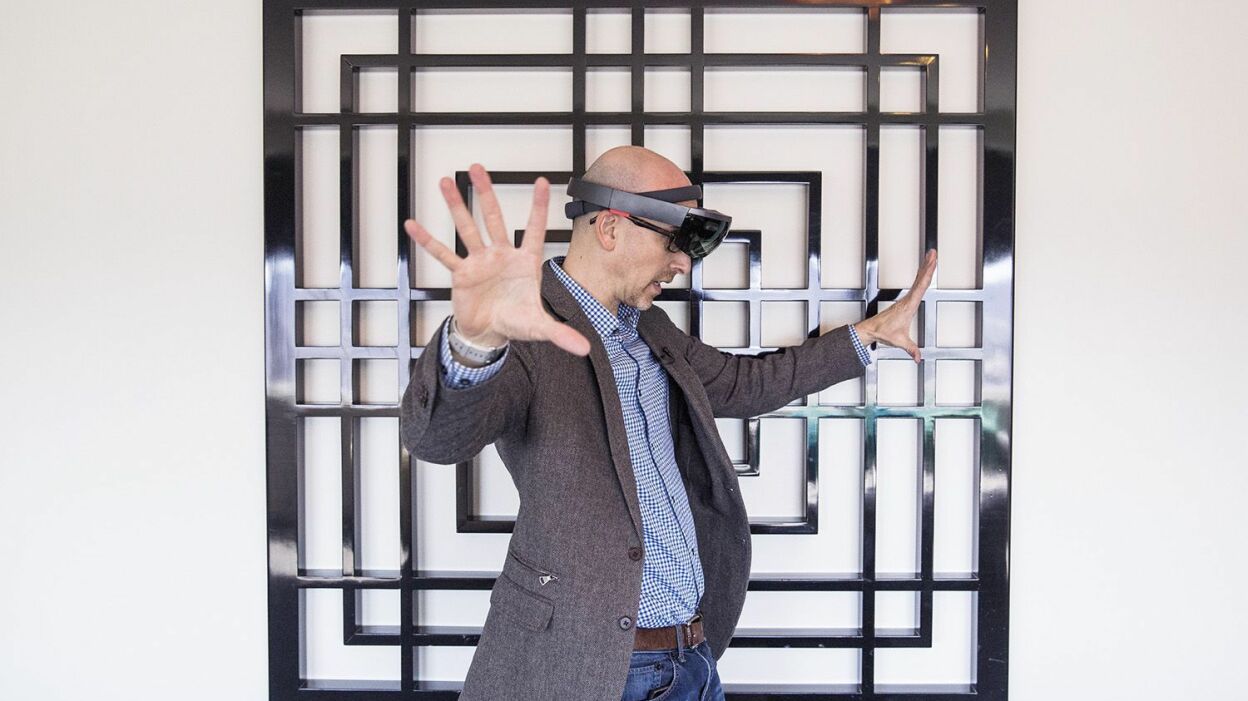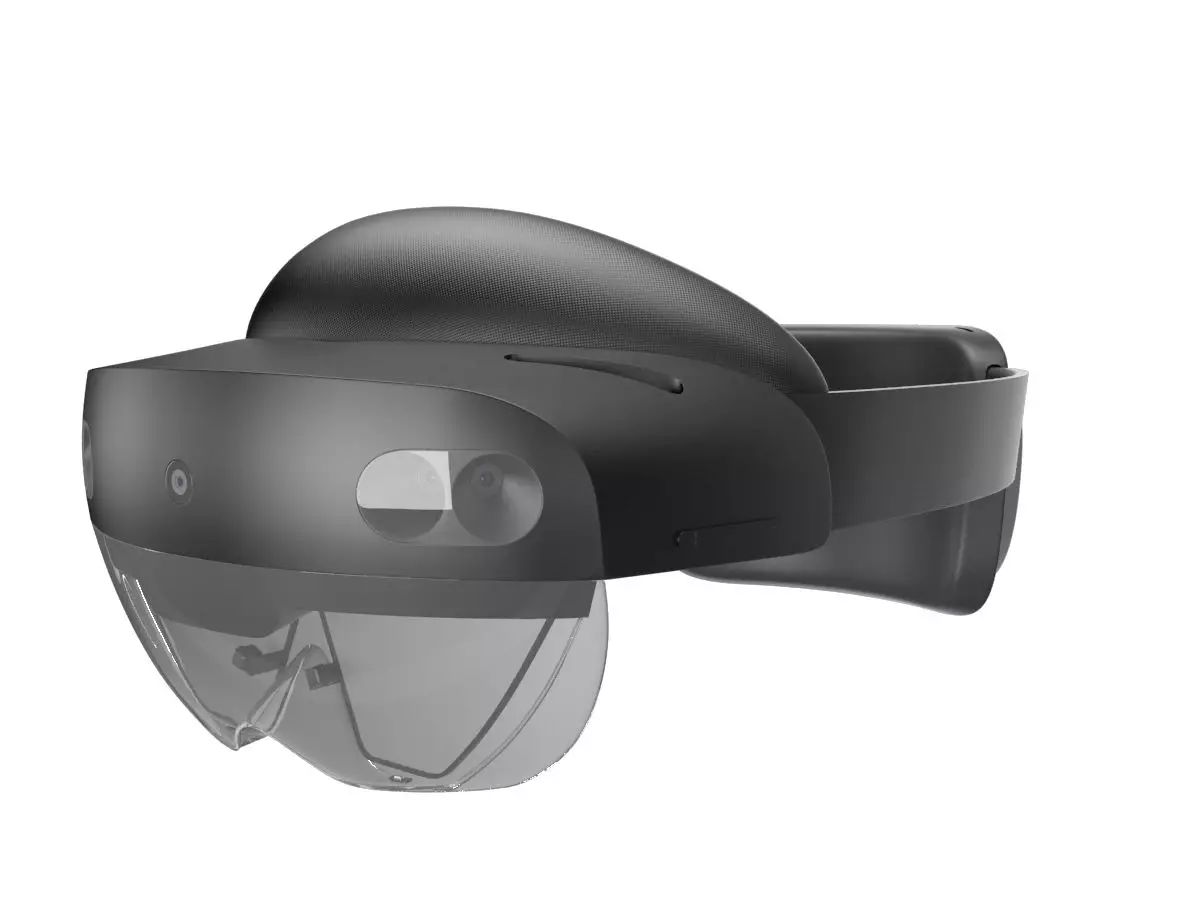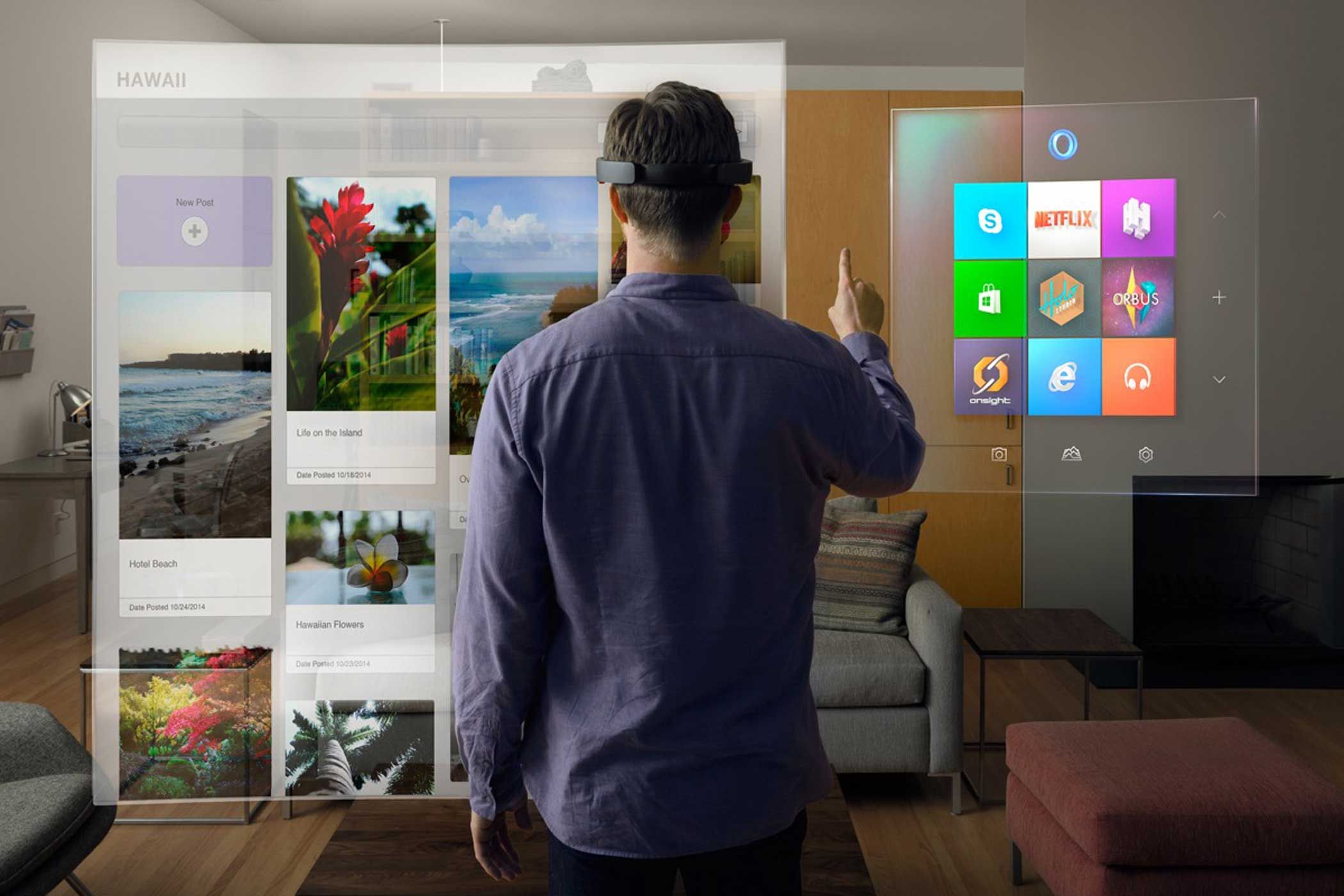Introduction
Welcome to the world of HoloLens Development Kit! In this article, we will explore the exciting possibilities and benefits of this revolutionary kit that is transforming the way we interact with augmented reality.
HoloLens Development Kit is a cutting-edge technology developed by Microsoft that brings mixed reality experiences to life. Unlike virtual reality, which replaces the real world with a simulated one, mixed reality blends virtual elements with the real environment, allowing users to engage with digital content in a more natural and immersive way.
With HoloLens Development Kit, developers have access to a powerful platform for creating holographic applications, games, and experiences. It provides a wide range of tools, resources, and APIs that empower creators to bring their ideas to life and push the boundaries of what is possible in augmented reality.
Whether you are a seasoned developer or just starting your journey in the world of programming, HoloLens Development Kit offers an incredible opportunity to explore the realm of mixed reality and create innovative solutions that can revolutionize various industries, including gaming, education, healthcare, and more.
Throughout this article, we will delve into the various features and benefits of HoloLens Development Kit, provide insights into how to get started with it, highlight some impressive applications already developed using the kit, and discuss the limitations and challenges that developers may encounter. Additionally, we will glimpse into the future of HoloLens Development Kit and its potential impact on the world of augmented reality.
So, if you’re ready to embark on an exciting journey into the world of mixed reality and unleash your creativity with HoloLens Development Kit, let’s dive in and discover the endless possibilities it offers!
What is HoloLens Development Kit?
The HoloLens Development Kit is a comprehensive set of tools, hardware, and software designed by Microsoft to enable developers to create holographic experiences and applications. It is an advanced mixed reality platform that combines virtual elements with the real world, providing users with a unique and immersive computing experience.
At its core, the HoloLens Development Kit consists of a wearable headset that overlays holographic images onto the user’s real-world environment. The headset is equipped with a high-resolution display, advanced sensors, and spatial sound technology, allowing users to interact with digital objects as if they were physically present.
One of the key components of the HoloLens Development Kit is the HoloLens device itself. This lightweight and wireless headset is equipped with an array of sensors, including depth, motion, and camera sensors, which enable precise tracking of the user’s movements and the environment. The device also features a built-in microphone and speakers, providing users with the ability to engage in voice commands and hear spatial sound.
Alongside the hardware, the HoloLens Development Kit includes a suite of software tools and APIs that enable developers to create holographic applications. Developers can leverage these tools to build immersive experiences, 3D spatial mapping, gesture recognition, and voice commands. The HoloLens Development Kit also provides robust support for Unity3D, allowing developers to easily build and deploy their creations onto the headset.
With the HoloLens Development Kit, developers have the freedom to explore various industries and use cases. From creating interactive gaming experiences to designing hands-on educational tools, the possibilities are virtually limitless. The kit is not only empowering individual developers, but also driving innovation in fields such as architecture, engineering, healthcare, and more.
Moreover, the HoloLens Development Kit offers a collaborative environment for developers to share their creations and learn from each other. The Microsoft Developer Community is a thriving ecosystem where developers can access tutorials, documentation, and support from experts, making it easier to create and iterate on their holographic projects.
In summary, the HoloLens Development Kit is a groundbreaking technology that is revolutionizing the way we interact with augmented reality. By combining virtual elements with the real world, it opens up new avenues for creativity and innovation. With its powerful hardware, robust software tools, and supportive developer community, the HoloLens Development Kit is empowering developers to create immersive holographic experiences that will shape the future of computing.
Benefits of HoloLens Development Kit
The HoloLens Development Kit offers a multitude of benefits for developers, businesses, and users alike. Let’s explore some of the key advantages of this innovative technology:
- Immersive User Experience: The HoloLens Development Kit provides users with a truly immersive and interactive experience by blending virtual and real-world elements. It allows users to see and interact with holograms in their environment, enhancing engagement and making applications more intuitive.
- Hands-Free Interaction: Unlike traditional virtual reality systems, the HoloLens Development Kit enables hands-free interaction. Users can manipulate holographic objects using gestures, gaze, and voice commands, eliminating the need for physical controllers and enhancing the feeling of natural interaction.
- Real-Time Collaboration: The HoloLens Development Kit allows users to collaborate in real time, regardless of their physical location. Multiple users can share the same holographic experience, enabling remote collaboration, virtual meetings, and training sessions, ultimately enhancing productivity and efficiency.
- Enhanced Learning and Training Opportunities: The HoloLens Development Kit has immense potential in education and training. From interactive 3D models to immersive simulations, it offers a hands-on learning experience that can enhance comprehension and retention. It also enables the training of complex tasks, such as medical procedures and technical skills, in a safe and controlled virtual environment.
- Industry-Specific Applications: The HoloLens Development Kit can be tailored to address specific industry needs. It has applications in fields such as architecture, engineering, manufacturing, healthcare, and more. For example, architects can visualize and manipulate 3D building designs, while healthcare professionals can use holographic overlays to assist in surgical procedures or medical training.
- Market Advantage: By embracing the HoloLens Development Kit, businesses can gain a competitive edge in their respective industries. By incorporating mixed reality experiences into their products or services, companies can differentiate themselves and offer unique and compelling experiences that engage customers and drive revenue growth.
- Ease of Development: The HoloLens Development Kit provides developers with a robust set of tools and resources to create holographic applications. With its support for popular development platforms such as Unity3D, developers can quickly learn and leverage their existing skills to create immersive experiences.
- Supportive Developer Community: The HoloLens Development Kit benefits from a large and active developer community. Developers can tap into a wealth of resources, tutorials, and forums where they can seek help, share knowledge, and collaborate on new projects. This vibrant community fosters innovation and encourages the exchange of ideas.
In summary, the HoloLens Development Kit offers a range of benefits, providing users with immersive experiences, empowering businesses with new opportunities, and enabling developers to create innovative holographic applications. With its hands-free interaction, real-time collaboration, industry-specific applications, and supportive developer community, the HoloLens Development Kit is shaping the future of mixed reality.
Features of HoloLens Development Kit
The HoloLens Development Kit comes equipped with a range of powerful features and technologies that enable developers to create immersive and interactive mixed reality experiences. Let’s explore some of the key features of this groundbreaking kit:
- Spatial Mapping: The HoloLens Development Kit utilizes advanced sensors to create a detailed spatial map of the user’s environment. This enables precise placement of holograms and ensures that they interact seamlessly with the real world.
- Gaze and Gesture Tracking: With the HoloLens Development Kit, users can interact with holographic objects using their gaze and hand gestures. The kit tracks the user’s eye movements and hand gestures, allowing for a natural and intuitive way of interacting with the digital content.
- Holographic Display: The HoloLens Development Kit features a high-resolution display that overlays holograms onto the user’s real-world environment. This display provides a seamless integration of virtual and real elements, resulting in a highly immersive mixed reality experience.
- Headset Design and Comfort: The HoloLens Development Kit is designed to be lightweight and comfortable, allowing users to wear it for extended periods without discomfort. The adjustable straps and padding ensure a secure and personalized fit for each user.
- Spatial Sound: The HoloLens Development Kit incorporates spatial sound technology, which enhances the user’s perception and immersion in the mixed reality environment. Sound is projected based on the user’s position and interactions, providing an auditory experience that matches the visuals.
- Voice Commands: Users can control and interact with holograms using voice commands. The HoloLens Development Kit is equipped with a built-in microphone and supports voice recognition, enabling hands-free operation and enhancing the overall user experience.
- Developer Tools: The HoloLens Development Kit provides developers with a comprehensive set of tools and resources. The kit supports popular development platforms, such as Unity3D, and offers a range of APIs for incorporating spatial mapping, gesture recognition, voice commands, and more into applications.
- Wireless Connectivity: The HoloLens Development Kit is wireless, allowing users to move freely within their environment without the need for cumbersome cables. This enhances the sense of immersion and freedom of movement during mixed reality experiences.
- Collaboration Capabilities: The HoloLens Development Kit enables real-time collaboration between multiple users. Users can share their holographic experiences, interact with each other’s holograms, and collaborate on projects, regardless of their physical location.
- Advanced Sensors: The HoloLens Development Kit is equipped with a range of advanced sensors, including depth sensors and motion tracking, which enable accurate tracking of the user’s movements and the environment. This ensures precise placement and interaction of holographic objects.
These are just a few of the notable features that make the HoloLens Development Kit a groundbreaking tool for creating immersive mixed reality experiences. Developers can leverage these features to build innovative applications that push the boundaries of what is possible in augmented reality.
How to Get Started with HoloLens Development Kit
Getting started with the HoloLens Development Kit is an exciting journey that allows developers to unlock the potential of mixed reality. Here are the steps to guide you on your path to creating immersive holographic experiences:
- Hardware Requirements: The first step is to ensure you have the necessary hardware. You will need the HoloLens headset, which is the cornerstone of the development kit. The headset provides the foundation for creating and testing holographic applications.
- Software Installation: Once you have the HoloLens headset, you can proceed with installing the necessary software. Microsoft provides a comprehensive set of development tools and APIs specifically designed for the HoloLens platform. Ensure that your development environment is updated and compatible with the HoloLens development tools.
- Learning the Basics: Familiarize yourself with the basic concepts and principles of mixed reality development. Microsoft offers a wealth of documentation, tutorials, and sample projects to help you understand the fundamentals of creating holographic applications. Dive into these resources to gain a solid foundation for your development journey.
- Exploring the Development Tools: The HoloLens Development Kit supports popular development platforms such as Unity3D. Take the time to explore and master the development tools and workflows that are compatible with the HoloLens platform. This knowledge will enable you to harness the full potential of the development kit and create immersive experiences.
- Working with Sensors and Inputs: Understand the capabilities of the HoloLens sensors, such as gaze tracking, gesture recognition, and voice commands. These sensors play a crucial role in interacting with holograms and creating intuitive user experiences. Learn how to incorporate these inputs into your applications to enhance the immersion and functionality.
- Building Your First Holographic Application: Start by building a simple holographic application to gain hands-on experience. Begin with a basic scenario, such as placing a holographic object in the user’s environment or creating a simple interactive experience. As you progress, you can explore more advanced features and techniques to create increasingly complex applications.
- Testing and Iterating: Testing is a vital part of the development process. Use the HoloLens device to test your applications and ensure they work seamlessly in the mixed reality environment. Gather feedback from users and iterate on your designs to improve functionality and user experience.
- Joining the Developer Community: The HoloLens development community is a valuable resource for support, inspiration, and collaboration. Engage with other developers, join forums and communities, and attend events to stay up to date with the latest developments in mixed reality and connect with like-minded individuals.
- Continued Learning and Exploration: The world of mixed reality is constantly evolving. Stay informed about new tools, features, and best practices through continuous learning. Microsoft regularly releases updates and enhancements to the development tools and software, so it’s crucial to stay up to date with the latest advancements in the HoloLens ecosystem.
Remember, learning and mastering the HoloLens Development Kit is a journey that requires patience, dedication, and a passion for immersive experiences. By following these steps and continually exploring the possibilities of mixed reality, you can create captivating and innovative holographic applications that push the boundaries of what is possible in augmented reality.
Tools and Resources for HoloLens Development Kit
The HoloLens Development Kit provides developers with a wide range of tools and resources to facilitate the creation of innovative mixed reality experiences. These tools help developers harness the full potential of the HoloLens platform and unleash their creativity. Let’s explore some of the key tools and resources available:
- Unity3D: Unity3D is a popular and powerful game development platform that is fully compatible with the HoloLens Development Kit. It offers a variety of tools and features for creating interactive 3D experiences, allowing developers to build immersive mixed reality applications with ease.
- Visual Studio: Visual Studio is an integrated development environment (IDE) that provides comprehensive tools for building, debugging, and deploying applications. With Visual Studio, developers can write code, design user interfaces, and test their applications for the HoloLens platform.
- Microsoft Mixed Reality Toolkit (MRTK): The Microsoft Mixed Reality Toolkit is an open-source framework specifically designed for building mixed reality applications. It provides a collection of scripts, components, and tools that streamline the development process and enhance the functionality of HoloLens applications.
- HoloToolkit: The HoloToolkit is a set of libraries and tools developed by Microsoft to accelerate mixed reality application development. It offers features such as spatial mapping, gesture recognition, spatial sound, and voice commands, making it easier for developers to incorporate these functionalities into their applications.
- Documentation and Tutorials: Microsoft provides extensive documentation and tutorials to guide developers through the process of creating HoloLens applications. These resources cover topics such as getting started, spatial mapping, user interaction, and more. The documentation serves as a valuable reference while the tutorials provide step-by-step guidance for building specific features or applications.
- Developer Community: The HoloLens development community is a vibrant and supportive ecosystem of developers, designers, and enthusiasts. Engaging with the developer community provides opportunities to connect with like-minded individuals, ask questions, share knowledge, and collaborate on projects. Microsoft hosts forums, online communities, and events where developers can connect and learn from each other.
- Samples and Code Examples: Microsoft provides a repository of sample projects and code examples that showcase various features and functionalities of the HoloLens Development Kit. These samples serve as a valuable resource for learning best practices, understanding the capabilities of the platform, and jumpstarting development projects.
- Microsoft Store and Marketplace: The Microsoft Store and Marketplace provide platforms for distributing and monetizing HoloLens applications. Developers can publish their applications on the store, allowing users to discover and download their creations. The marketplace also offers a range of resources and tools to help developers market and monetize their applications.
- HoloLens Emulator: The HoloLens Emulator allows developers to test and debug their applications without the need for a physical device. It provides a simulated HoloLens environment, enabling developers to validate their applications and ensure they function as intended.
These tools and resources form a robust ecosystem that supports developers in creating immersive and interactive mixed reality experiences with the HoloLens Development Kit. By leveraging these tools and engaging with the developer community, developers can unlock the full potential of the platform and bring their creative visions to life.
Examples of HoloLens Development Kit Applications
The HoloLens Development Kit has sparked a wave of innovation, leading to the creation of a wide range of captivating applications in various industries. These applications demonstrate the incredible potential of mixed reality and offer a glimpse into the future of computing. Here are a few notable examples:
- Medical Training and Visualization: HoloLens Development Kit has been leveraged in healthcare to revolutionize medical training and patient care. Surgeons can use holographic overlays to guide them during complex surgeries, enhancing precision and reducing the risk of errors. Medical students can also benefit from immersive anatomy lessons, where holographic representations of the human body provide a hands-on learning experience.
- Architectural Design and Visualization: Architects and designers can utilize the HoloLens Development Kit to create holographic architectural models and visualize designs in real-world environments. This allows them to explore and showcase their creations in a compelling and interactive manner, helping clients and stakeholders better understand architectural concepts and evaluate proposed designs from various perspectives.
- Remote Assistance and Collaboration: The HoloLens Development Kit enables real-time collaboration and remote assistance across various industries. For instance, field technicians can wear the HoloLens headset and share their real-time point of view with remote experts. Experts can then provide guidance by overlaying holographic instructions or annotations, assisting in complex repairs or maintenance tasks without the need for travel.
- Education and Learning: The HoloLens Development Kit offers innovative solutions for education and learning. Educators can use holographic content to create immersive lessons, allowing students to interact with 3D models and simulations. This hands-on approach enhances engagement and knowledge retention, making learning more enjoyable and effective.
- Manufacturing and Assembly: In manufacturing, the HoloLens Development Kit has been utilized to improve assembly and quality control processes. Holographic overlays can guide workers step-by-step through assembly procedures, reducing errors and improving efficiency. HoloLens can also assist in quality control by overlaying real-time data and highlighting potential issues in the manufacturing process.
- Gaming and Entertainment: The HoloLens Development Kit has transformed the gaming and entertainment industry, providing a new level of immersion and interactivity. With holograms overlayed in the real world, users can engage in mixed reality gaming experiences that blur the lines between digital and physical. Interactive storytelling and virtual experiences have also been enhanced, allowing users to transport themselves into new worlds and narratives.
- Training for Hazardous Environments: The HoloLens Development Kit is being used to train workers in hazardous environments, such as high-risk industrial settings or emergency response scenarios. By providing holographic simulations of dangerous situations, workers can practice safety procedures and crisis response without real-world risks, ensuring readiness and minimizing potential dangers.
- Design and Prototyping: Designers and engineers can leverage the HoloLens Development Kit to visualize and iterate on prototypes. Holographic overlays allow them to view and manipulate virtual models in real-world spaces, speeding up the design process and reducing the need for physical prototypes.
- Tourism and Cultural Preservation: The HoloLens Development Kit has found applications in tourism and cultural preservation. Users can explore historical sites through holographic reconstructions, learn about cultural heritage, and engage in interactive experiences that bring the past to life. This technology opens up new possibilities for immersive tourism experiences and preservation efforts.
These examples represent just a glimpse of the diverse range of applications that the HoloLens Development Kit has enabled. As the technology continues to evolve, we can expect to see even more innovative and transformative uses of mixed reality in various industries.
Limitations and Challenges of HoloLens Development Kit
While the HoloLens Development Kit offers incredible possibilities for mixed reality experiences, it also comes with certain limitations and challenges that developers and users should be aware of. Let’s explore some of these limitations and challenges:
- Field of View: One of the primary limitations of the HoloLens Development Kit is its relatively narrow field of view. The holographic content is displayed within a limited area, which can sometimes restrict the user’s immersion and interaction with virtual objects. Users need to be mindful of head movements to ensure optimal viewing angles.
- Device Comfort and Battery Life: Although the HoloLens Development Kit offers a comfortable design, extended usage can still cause discomfort or fatigue for some users. Additionally, the battery life of the device may be relatively short, which can limit the duration of continuous use before requiring recharging.
- Content Development Complexity: Developing robust and immersive mixed reality experiences can be a complex process. Creating high-quality holographic content, designing intuitive interactions, and optimizing performance for the HoloLens platform can pose challenges for developers. Adequate training and expertise are necessary to fully harness the capabilities of the HoloLens Development Kit.
- Accessibility: The HoloLens Development Kit has limited accessibility for users with visual or hearing impairments. The reliance on visual and spatial interactions may present barriers for certain individuals. It’s crucial for developers to consider accessibility guidelines and provide alternative interaction methods whenever possible.
- Interactions in Real-World Environments: The HoloLens Development Kit relies on accurate spatial mapping and occlusion detection to interact seamlessly with the real world. However, complex or dynamic real-world environments, such as crowded spaces or variance in lighting conditions, can pose challenges for accurate interaction detection and tracking.
- Cost and Availability: The HoloLens Development Kit is a premium technology, and the cost of the hardware and software licenses can be prohibitive for some developers and businesses. Limited availability of the devices may also impact accessibility, hindering widespread adoption and development of HoloLens applications.
- App Discoverability: With the growing number of HoloLens applications available, app discoverability can be a challenge. Developers need to invest in marketing and promotion efforts to ensure their applications reach their target audience and stand out amongst the competition in the Microsoft Store and Marketplace.
- User Education and Adoption: As a relatively new technology, mixed reality using the HoloLens Development Kit may require users to familiarize themselves with new ways of interaction and learn how to navigate holographic experiences effectively. User education and adoption can present challenges, particularly when targeting broader consumer markets.
- Data Privacy and Security: HoloLens applications may involve the collection and processing of sensitive user data, such as localization or personal information. Developers need to prioritize data privacy and ensure robust security measures are in place to protect user data and maintain user trust.
Recognizing these limitations and challenges is crucial for developers and users alike. Despite these challenges, the HoloLens Development Kit continues to push the boundaries of mixed reality, and as technology advances, it is expected that many of these limitations will be addressed or mitigated over time.
Future of HoloLens Development Kit
The future of the HoloLens Development Kit holds immense potential as mixed reality continues to evolve and become more integrated into our daily lives. Here are some key areas where we can expect to see advancements and opportunities:
- Hardware Enhancements: As technology progresses, we can anticipate significant improvements in the HoloLens hardware. Advancements in display quality, field of view, comfort, and battery life are likely to make the device more immersive, user-friendly, and accessible to a wider audience.
- Increased Application Diversity: As more developers embrace the HoloLens Development Kit, we can expect to see a broader spectrum of applications that cover diverse industries and use cases. From healthcare and education to entertainment and manufacturing, the potential for innovative mixed reality experiences is virtually limitless.
- Improved Interaction Techniques: Future iterations of the HoloLens Development Kit may introduce new and enhanced interaction techniques. These could include advancements in gesture recognition, voice commands, eye-tracking, and even brain-computer interfaces. Such innovations will further blur the lines between the digital and physical worlds, making interactions within mixed reality more seamless and natural.
- Cloud Integration: Cloud computing and storage capabilities can greatly enhance the HoloLens Development Kit by providing advanced spatial mapping, machine learning, and collaborative capabilities. By offloading computational tasks to the cloud, the HoloLens can become more powerful, allowing for faster and more complex mixed reality experiences.
- Social and Collaborative Experiences: The future of mixed reality is anticipated to include enhanced social and collaborative experiences. Users may be able to share holograms, interact with each other in shared virtual spaces, and work together on projects irrespective of their physical locations. This could revolutionize the way we communicate, collaborate, and learn, expanding the possibilities for remote work and interconnectedness.
- Miniaturization and Wearable Integration: Over time, we can expect the HoloLens Development Kit to become more compact, lightweight, and seamlessly integrated into various wearable devices. This advancement could lead to new form factors and use cases, enabling augmented reality experiences that can be seamlessly embedded into everyday objects like glasses, helmets, and even contact lenses.
- Artificial Intelligence Integration: The integration of artificial intelligence (AI) capabilities can further enhance the HoloLens Development Kit. AI algorithms can enable more realistic holograms, adaptive and personalized experiences, as well as intelligent assistance in essential tasks such as object recognition and context-awareness.
- Widespread Adoption and Commercialization: As the HoloLens Development Kit continues to mature and evolve, we can anticipate increased affordability, availability, and adoption amongst consumers and businesses. This wider adoption will spur an ecosystem of applications, services, and content, further fueling innovation and driving the commercialization of mixed reality experiences.
The future of the HoloLens Development Kit is undeniably exciting. As advancements in technology, software, and user experiences continue, the kit has the potential to transform how we interact with information, objects, and each other. With continuous development and collaboration from the developer community, the HoloLens Development Kit is poised to revolutionize industries and reshape the future of computing.
Conclusion
The HoloLens Development Kit is a remarkable technology that is revolutionizing the way we perceive and interact with the world around us. Its ability to seamlessly blend virtual and real elements opens up a new realm of possibilities in various industries and applications.
In this article, we explored the HoloLens Development Kit and uncovered its numerous benefits, including immersive user experiences, hands-free interactions, real-time collaboration, and industry-specific applications. We also highlighted some of the key features of the HoloLens Development Kit, such as spatial mapping, gaze and gesture tracking, holographic display, and more.
Getting started with the HoloLens Development Kit requires the right hardware, software installation, and a solid understanding of the basics of mixed reality development. Exploring the available tools, resources, and engaging with the developer community are vital for success on this unique journey.
While the HoloLens Development Kit brings tremendous opportunities, it also comes with limitations and challenges, including field of view limitations, device comfort, content development complexity, and accessibility concerns. However, as technology evolves, many of these limitations are expected to be addressed, unlocking even more potential.
Looking ahead, the future of the HoloLens Development Kit holds great promise. Advancements in hardware, improved interaction techniques, cloud integration, and wearable integration are likely to enhance the overall mixed reality experience. Additionally, the widespread adoption and commercialization of the HoloLens Development Kit will further drive innovation and spur the creation of diverse and immersive applications.
Ultimately, the HoloLens Development Kit is empowering developers, businesses, and users to create and explore new frontiers in mixed reality. By harnessing its capabilities, we can shape a future where holograms seamlessly integrate into our daily lives, offering enhanced productivity, entertainment, education, and collaboration.
So, if you’re passionate about pushing the boundaries of technology and want to be at the forefront of the mixed reality revolution, the HoloLens Development Kit is your gateway to a world of endless possibilities. Start creating, exploring, and transforming the way we interact with the world today!









